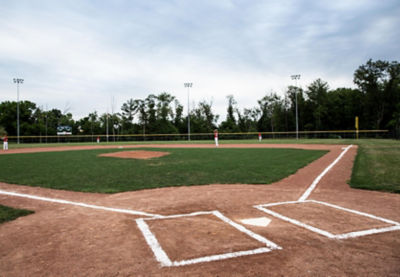The Difference Between Fastpitch and Slow Pitch Softball Gloves
Faster pitching and a slightly smaller ball impacts the game in a plethora of ways, including what sort of glove or mitt you might need.
Are you looking to make the switch from slow pitch softball to fastpitch? In one game, 11" or 12" balls come at you quickly in the batter’s box, depending on the age of the players. In the other, 12" balls are pitched slowly, no matter the age. But that’s not the only difference. The gloves used to play fastpitch and slow pitch softball are different as well.
CATCHER’S MITTS
It’s important to note that fastpitch catching demands a mitt specifically designed for catching.
In slow pitch softball, catchers aren’t limited to using catcher’s mitts. In fact, they can use a utility mitt or even a fielder’s glove. That’s because they aren’t trying to catch a ball that’s traveling full speed.
Fastpitch catchers, on the other hand, might need to clasp a ball traveling 55 mph or more. A catcher’s mitt helps you here in two ways. First, the extra padding and shape of the mitt helps give the player more support and protection. Also, a catcher’s mitt has a greater surface area, improving accuracy, and will allow for the quicker catch and release of some ball flights, such as ground balls.
"When the ball speed increases to around 75 mph, the position becomes more demanding. In fast pitch, you'll need the extra protection and padding offered in the actual catcher's mitt," says Maureen Lawrence, a DICK'S Sporting Goods Associate and former Division I Athlete and Coach.
If you’re going to be a catcher in a fastpitch league, it’s one of the most demanding positions in the game. So, be sure you specifically buy a catcher’s mitt marketed for softball.
PITCHER’S GLOVES
"The key difference between these two games belongs on the pitcher’s mound. In slow pitch, there’s only one pitch — underhand and slow. In fastpitch, there’s much more variation," says Lawrence.
These variations create a pitcher’s need to hide his finger placement on the ball. Using a mitt with closed webbing is designed to help keep the style of pitch hidden from the batter.
ALL ABOUT SIZE
Sometimes, you will need especially large gloves to play slow pitch, but it all depends on the size of the ball.
Your basic fastpitch balls have an 11" or 12" circumference and a slow pitch ball has a 12" circumference, which is already monumentally larger than a baseball. Some leagues — generally men’s leagues — actually use a ball up to a 14". If your league uses this oversized ball, you’ll want to pick out a bigger glove.
Make sure to check in with your league about ball size regulations and choose a glove accordingly.
WEAR AND TEAR
Wear and tear is the final consideration when deciding whether your slow pitch glove will suit your fastpitch play or vice-versa.
Maybe you’ve been playing slow pitch with a synthetic leather glove for years without having to replace it. But when you transition that glove to fastpitch, it’ll wear out far more quickly. An already well-worn synthetic leather might not survive a full season of fastpitch play. If you plan to continue playing, it may be worth it to invest in a stronger form of leather, like steerhide or full-grain.
"Whether you are playing fast pitch or slow pitch, it's important to find a glove that you feel comfortable and confident in. That way, you'll be ready to make a play when it matters the most," says Lawrence.
Now that you know the difference between fastpitch and slow pitch gloves, you’ll be one step closer to finding the right softball glove for your play.











